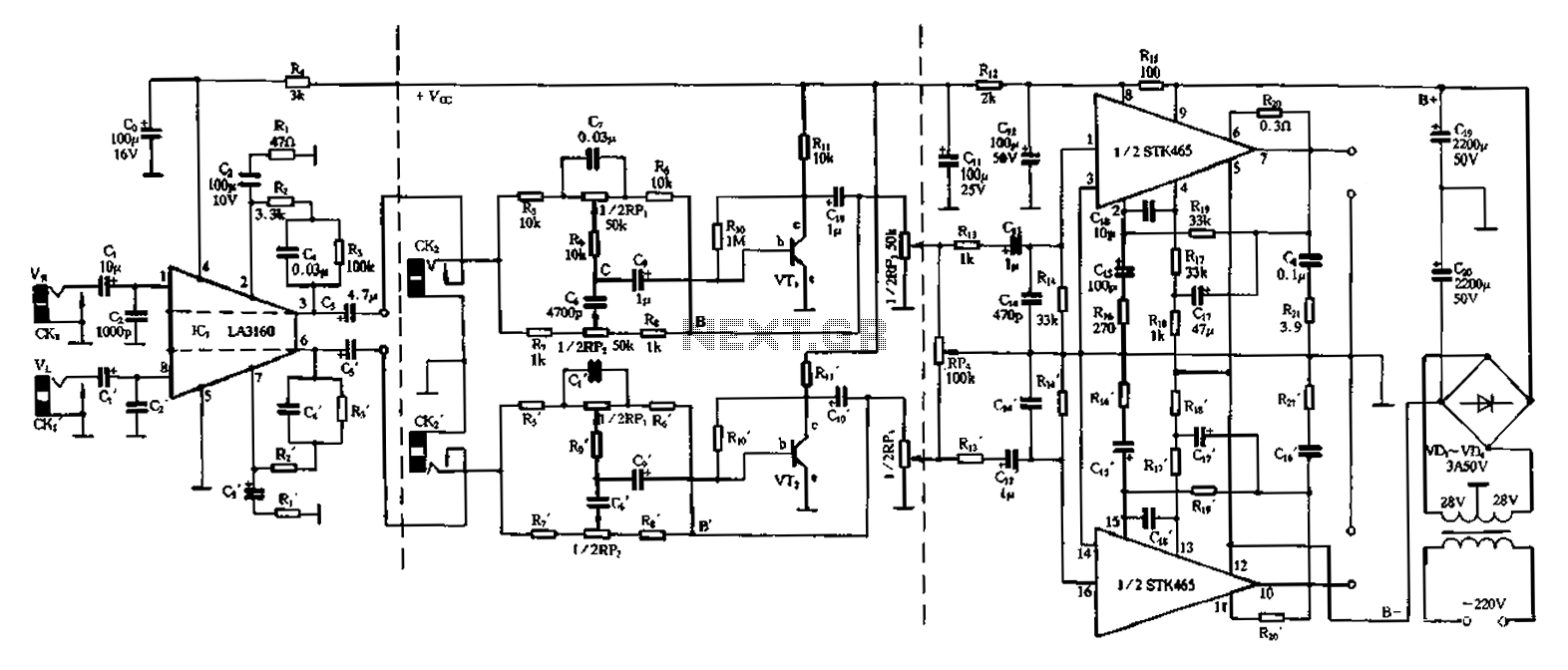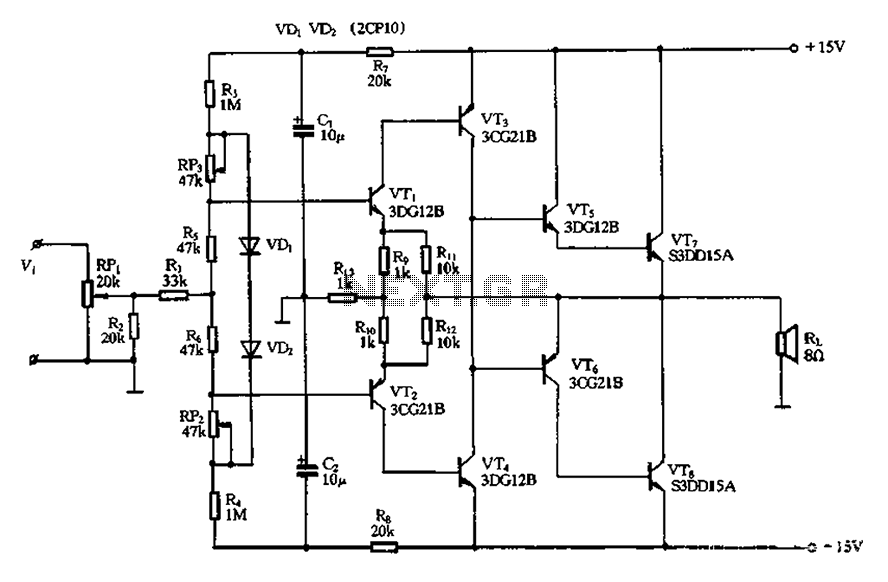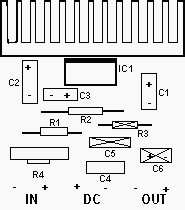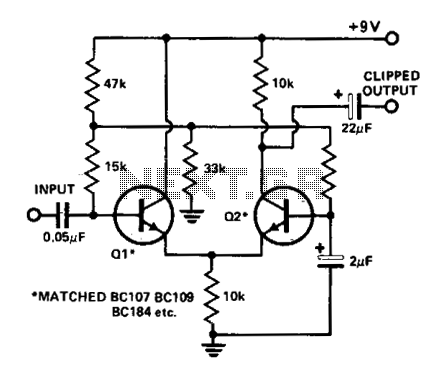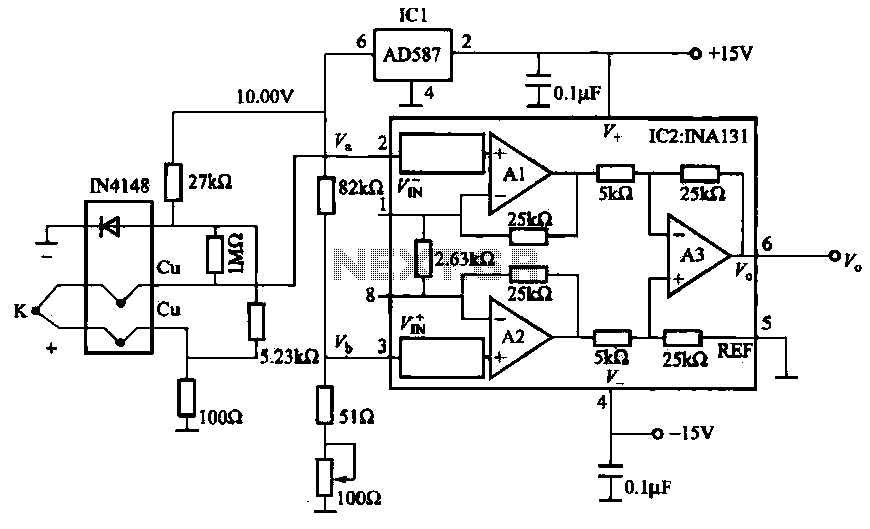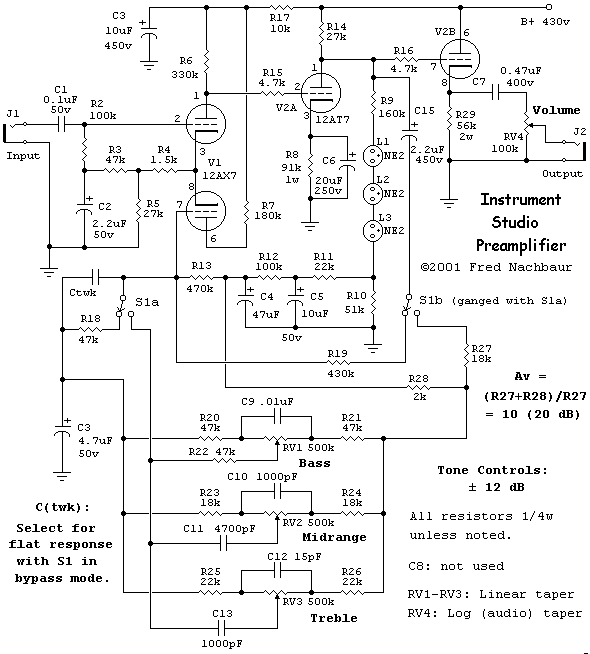
TDA 2030 8W Audio Amplifier
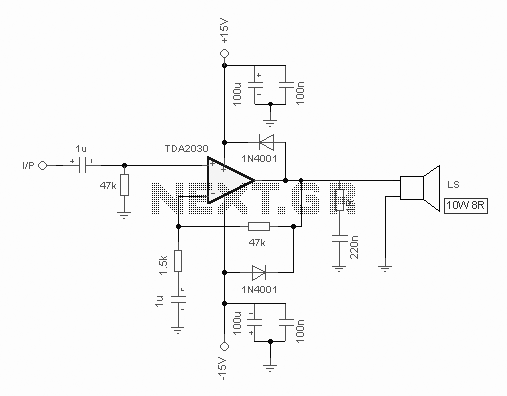
The TDA 2030 audio amplifier is capable of delivering 20 W of output power; however, in this schematic, the output power has been reduced to 8 W, and 10 W speakers are utilized. The input sensitivity is approximately 200 mV, and the amplifier configuration is determined by the 47 kΩ and 1.5 kΩ resistors.
The TDA 2030 is a popular integrated circuit used in audio amplification applications, known for its robustness and efficiency. In this particular configuration, the output power is intentionally limited to 8 W to match the specifications of the 10 W speakers, ensuring optimal performance without risk of damage or distortion.
The input sensitivity of around 200 mV indicates that the amplifier can effectively drive audio signals from various audio sources, such as smartphones, computers, or other audio playback devices. The choice of the 47 kΩ and 1.5 kΩ resistors plays a critical role in setting the gain of the amplifier. The ratio of these resistors establishes the overall amplification factor, allowing for fine-tuning of the output signal to achieve the desired sound level without introducing excessive noise or distortion.
The schematic may also include bypass capacitors to stabilize the power supply and improve transient response, as well as coupling capacitors to block any DC offset from the input signal, ensuring that only the AC audio signal is amplified. Additionally, heat sinks are often recommended for the TDA 2030 to dissipate heat generated during operation, especially when driving speakers at higher volumes.
Overall, this configuration provides a reliable and efficient solution for audio amplification, suitable for various applications where moderate power output is required, while maintaining sound quality and fidelity.TDA 2030 audio amplifier can output 20 W but in this schematic we have reduced the power to 8w and we use 10w speakers. The input sensivity is around 200mV and the amplifier is set by the 47k and 1.5k resistors. TDA2030 amplifier circuit di.. 🔗 External reference
The TDA 2030 is a popular integrated circuit used in audio amplification applications, known for its robustness and efficiency. In this particular configuration, the output power is intentionally limited to 8 W to match the specifications of the 10 W speakers, ensuring optimal performance without risk of damage or distortion.
The input sensitivity of around 200 mV indicates that the amplifier can effectively drive audio signals from various audio sources, such as smartphones, computers, or other audio playback devices. The choice of the 47 kΩ and 1.5 kΩ resistors plays a critical role in setting the gain of the amplifier. The ratio of these resistors establishes the overall amplification factor, allowing for fine-tuning of the output signal to achieve the desired sound level without introducing excessive noise or distortion.
The schematic may also include bypass capacitors to stabilize the power supply and improve transient response, as well as coupling capacitors to block any DC offset from the input signal, ensuring that only the AC audio signal is amplified. Additionally, heat sinks are often recommended for the TDA 2030 to dissipate heat generated during operation, especially when driving speakers at higher volumes.
Overall, this configuration provides a reliable and efficient solution for audio amplification, suitable for various applications where moderate power output is required, while maintaining sound quality and fidelity.TDA 2030 audio amplifier can output 20 W but in this schematic we have reduced the power to 8w and we use 10w speakers. The input sensivity is around 200mV and the amplifier is set by the 47k and 1.5k resistors. TDA2030 amplifier circuit di.. 🔗 External reference
